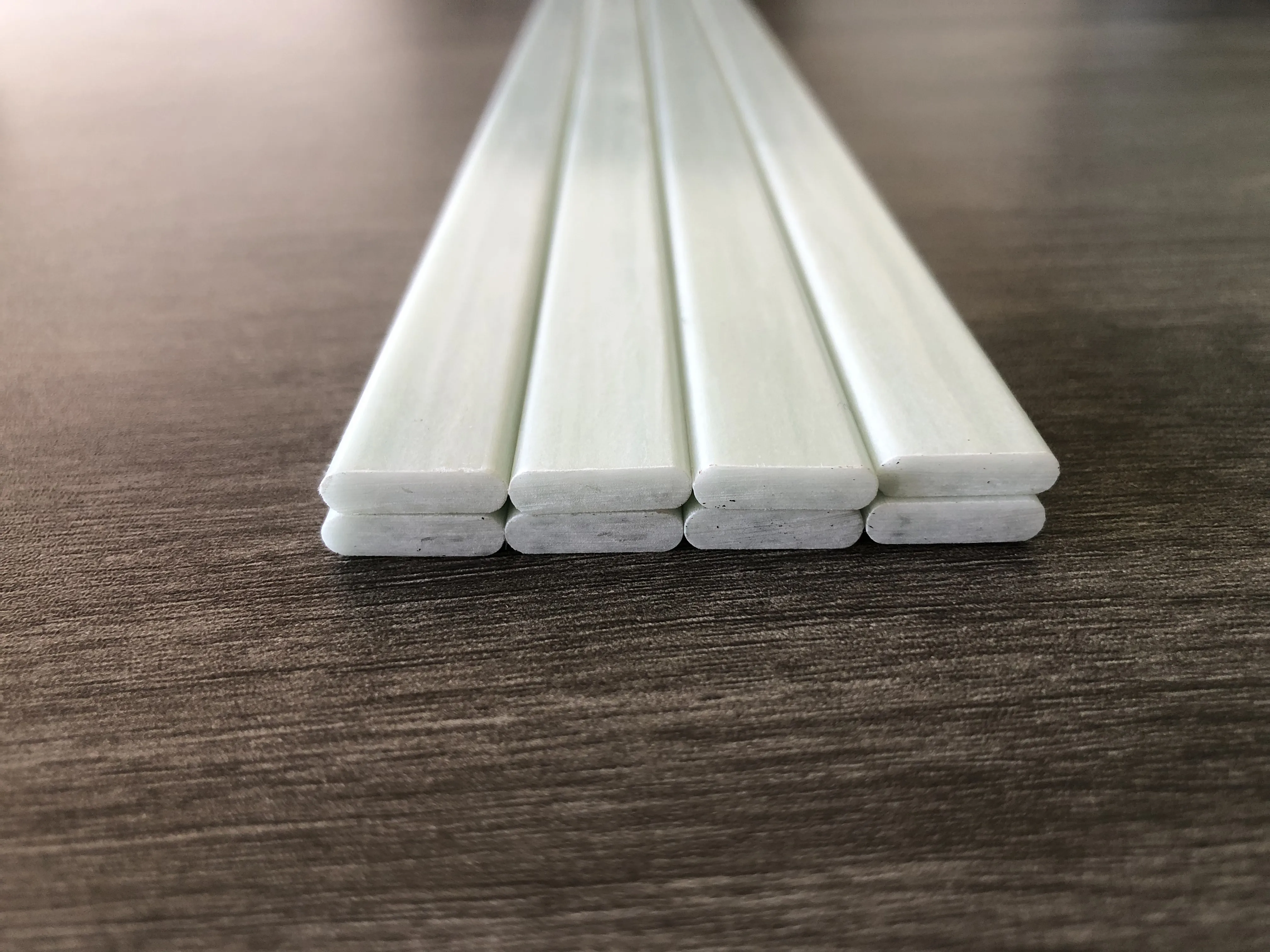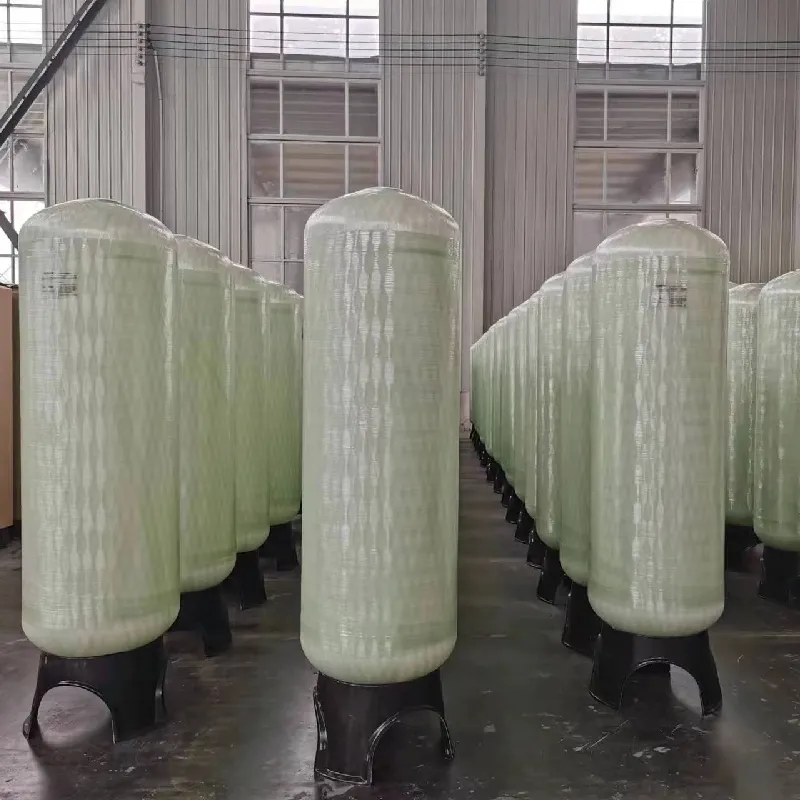loading...
- No. 9, Xingyuan South Street, Dongwaihuan Road, Zaoqiang County, Hengshui, Hebei, China
- admin@zjcomposites.com
- +86 15097380338
- Welcome to visit our website!
FRP Flat Bars High-Strength & Corrosion-Resistant Solutions
- Introduction to FRP Flat Bar Solutions
- Technical Superiority Over Traditional Materials
- Comparative Analysis of Reinforcement Bars
- Industry-Leading Manufacturer Capabilities
- Customization Options for Specialized Requirements
- Diverse Implementation Scenarios
- Why FRP Flat Bar Dominates Modern Construction

(frp flat bar)
Revolutionizing Construction with Advanced Composite Solutions
Fiber-Reinforced Polymer (FRP) flat bars represent a paradigm shift in structural reinforcement technology. These innovative composites utilize high-strength fibers embedded in polymer resins to create construction materials that outperform traditional steel in corrosive environments. Unlike metallic alternatives, FRP flat bars deliver unmatched durability in harsh chemical exposure while substantially reducing lifecycle maintenance costs. Major infrastructure projects globally are increasingly adopting these solutions, with the global FRP reinforcement market projected to grow at 12.8% CAGR through 2028 according to recent industry analyses.
The dimensional versatility of FRP flat bars allows thicknesses from 3mm to 50mm and widths up to 300mm. Standard lengths range from 6m to 18m, with custom manufacturing accommodating virtually any architectural requirement. Their non-conductive properties make them indispensable in electrical facilities and utility installations where safety concerns eliminate metal alternatives. When evaluating load-bearing requirements, FRP flat bars offer tensile strength ranging from 600MPa to 1,500MPa depending on fiber composition and resin matrix, enabling precise engineering solutions.
Unmatched Technical Advantages
Superior strength-to-weight ratios define FRP flat bar performance, with weights averaging 75-80% less than equivalent steel profiles. This translates directly to reduced structural dead loads, simplified transportation logistics, and accelerated installation cycles. Laboratory corrosion testing demonstrates 99.9% resistance to salt spray, acidic environments (pH 1-6), and alkaline conditions (pH 8-14), maintaining structural integrity where steel reinforcement would experience catastrophic failure within 5-7 years.
Electrical isolation capabilities include dielectric strength exceeding 10kV/mm and volume resistivity measurements of 10¹⁴ Ω·cm. Thermal performance remains stable across -40°C to +120°C operational ranges without significant expansion/contraction variation. Fatigue testing shows no degradation after 2 million cycles at 70% of ultimate tensile strength. These properties make FRP flat bars ideal for chemical processing plants, marine structures, and power transmission facilities.
Material Performance Benchmarking
| Property | FRP Flat Bar | Mild Steel | Stainless Steel 316 | Aluminum |
|---|---|---|---|---|
| Tensile Strength (MPa) | 800-1,500 | 400-550 | 515-690 | 90-250 |
| Corrosion Resistance | Excellent | Poor | Good | Moderate |
| Thermal Expansion (10⁻⁶/°C) | 6-20 | 12 | 16 | 23 |
| Electrical Conductivity | Non-conductive | High | High | High |
| Service Life (Years) | 50+ | 15-25 | 25-40 | 20-30 |
Manufacturing Capabilities Assessment
Leading producers have optimized FRP bar manufacturing through automated pultrusion processes. Quality systems certified to ISO 9001:2015 and ASTM D7205/D7957 standards ensure consistent mechanical properties across production runs. Top-tier manufacturers provide certified material traceability from raw material sourcing through final inspection, with comprehensive test reports including:
- Third-party validation of mechanical properties
- Chemical resistance certifications
- Fire performance ratings (Class A ASTM E84)
- Long-term creep behavior analysis
Custom Engineering Solutions
Specialized customization addresses unique project challenges through tailored solutions. Modifications include:
- Surface texturing for enhanced concrete bonding
- Precision drilling services (+/- 0.1mm tolerance)
- Fire-retardant resin formulations
- UV-resistant gel coatings
Demonstrated Implementation Success
Wastewater infrastructure exemplifies FRP flat bar superiority, with over 8,000 installations replacing corroded steel reinforcements. Recent case studies from coastal regions show 92% cost reduction in maintenance budgets over 10-year periods. Bridge deck reinforcement projects utilizing FRP profiles have extended service life projections to 75+ years, validated by accelerated aging simulations.
Industrial flooring applications in chemical plants have eliminated corrosion-induced spalling, with installations demonstrating zero degradation after 15 years of acid exposure. FRP rebar recently enabled Toronto's Harbourfront structural rehabilitation, overcoming chloride contamination that deteriorated traditional reinforcement within 8 years. Electrical substations now mandate FRP supports after industry studies demonstrated 300% safety improvement over metallic alternatives.
Advancing Structural Technology Frontiers
The future of construction reinforcement belongs to FRP bars, offering solutions impossible with obsolete metallic products. Environmental benefits include 40% lower embodied carbon during manufacturing and 90% recyclability, aligning with global sustainability initiatives. Continuous research programs at leading technical institutions are pushing tensile strength benchmarks beyond 2,000MPa while improving bonding characteristics with advanced nanoparticle treatments.
Manufacturers now provide full digital documentation including BIM objects and structural calculation modules. As certification frameworks evolve internationally, FRP flat bars will dominate infrastructure development, creating durable, sustainable structures for generations. The material transition from conventional steel isn't merely advantageous - it represents an engineering necessity for modern structural requirements.

(frp flat bar)
FAQS on frp flat bar
Q: What is an FRP flat bar and what are its common uses?
A: An FRP flat bar is a fiber-reinforced polymer profile with a rectangular cross-section. It is commonly used in structural reinforcement, corrosion-resistant applications, and lightweight construction projects.
Q: How does an FRP bar differ from traditional steel bars?
A: FRP bars are non-metallic, corrosion-resistant, and lighter than steel bars. They are ideal for environments prone to moisture, chemicals, or electromagnetic interference.
Q: What advantages do FRP flat bars offer over metal alternatives?
A: FRP flat bars provide high strength-to-weight ratios, electrical insulation, and resistance to rust. They require minimal maintenance compared to metal bars in harsh conditions.
Q: Can FRP steel bars be used as a direct replacement for steel reinforcement?
A: Yes, FRP steel bars are designed to replace traditional steel in concrete structures. They offer comparable tensile strength while eliminating corrosion risks in concrete.
Q: What industries benefit most from FRP flat bars and FRP bars?
A: Industries like civil engineering, marine, transportation, and chemical processing use FRP bars for corrosion resistance, durability, and lightweight solutions in infrastructure and equipment.
-
The Rise of FRP Profiles: Strong, Lightweight, and Built to LastNewsJul.14,2025
-
SMC Panel Tanks: A Modern Water Storage Solution for All EnvironmentsNewsJul.14,2025
-
GRP Grating: A Modern Solution for Safe and Durable Access SystemsNewsJul.14,2025
-
Galvanized Steel Water Tanks: Durable, Reliable, and Ready for UseNewsJul.14,2025
-
FRP Mini Mesh Grating: The Safer, Smarter Flooring SolutionNewsJul.14,2025
-
Exploring FRP Vessels: Durable Solutions for Modern Fluid HandlingNewsJul.14,2025
-
GRP Structures: The Future of Lightweight, High-Performance EngineeringNewsJun.20,2025
